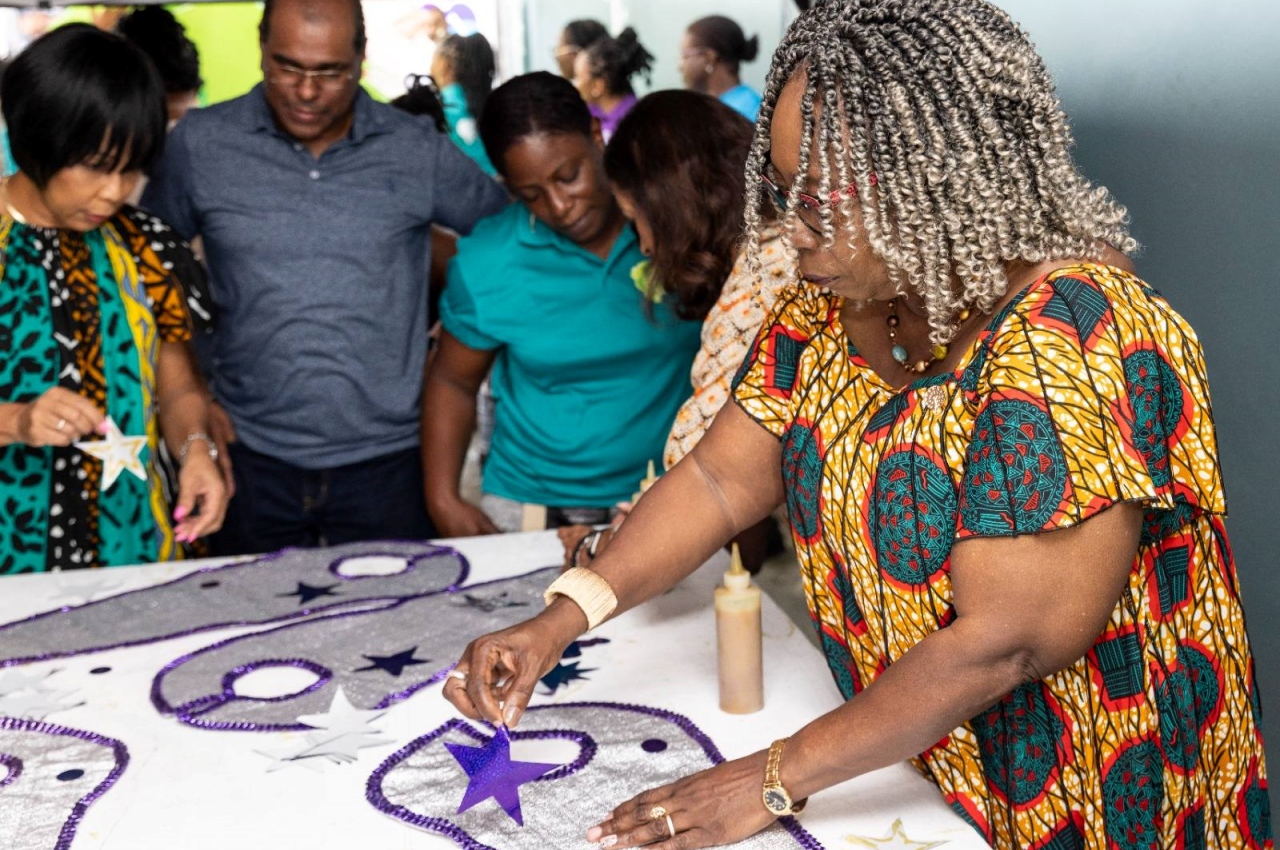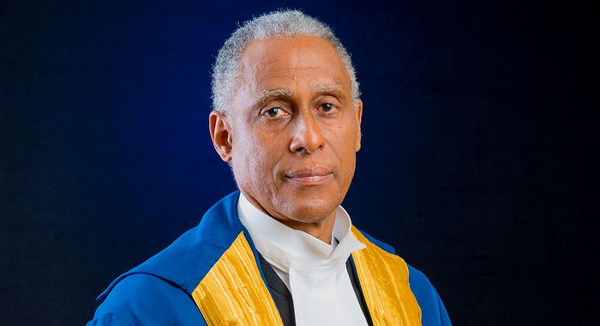“[…] Port-of-Spain has been converted into a huge playground in which 130 carnival bands, varying in size from 50 to 5,000 or more, will parade along a route of about ten kilometres of streets and avenues that were carefully selected to form a complete loop.
“[…] One section of the parade is reserved solely for Trinidad’s famous steelbands and, for a couple of hours, the air is filled with only the glorious sound of pan as that section passes.
“Gone from the parade are the drinks trucks and ‘wee’ trucks of years gone by. Near each of the ten starting points—some of which have been hubs of Carnival activities since December—are rest areas, bathrooms and large bars where, as they pass by, all masqueraders can freely refill their cups with ice and the drinks of their choice (indicated by the wristbands they purchased in advance)…”

(Copyright Justin Ramcharan/ Buzz-Caribbean)
The following Letter to the Editor, which proposes a detailed plan for reorganising the Trinidad Carnival in Port-of-Spain, was submitted to Wired868 by Dr Geoffrey Frankson of Cocorite:
It is 6am on 21 February 2023 and the city of Port-of-Spain in the Caribbean island of Trinidad is starting to come alive. It is the final day of the two-month Carnival season and 300,000 people are preparing for a grand climax that is unique among the carnivals of the world.
The city has been converted into a huge playground in which 130 carnival bands, varying in size from 50 to 5,000 or more, will parade along a route of about ten kilometres of streets and avenues that were carefully selected to form a complete loop.
The route meanders from the Queen’s Park Savannah, the huge expanse known as the lungs of Port-of-Spain, through the neighbourhood of St Clair to the community of St James at one extreme, then back towards the downtown area, passing through the Hasely Crawford Stadium and the community of Woodbrook.

(Copyright Analisa Caruth/Wired868)
From downtown, the loop swings ‘behind the bridge’ and passes by the General Hospital and Memorial Park, then back to the Savannah.
At even intervals of about one kilometre all along the loop are the starting points of the ten largest carnival bands. In front of and behind each are the medium-sized bands. In the centre of each stretch of the loop between the big bands are the smaller bands and the individual characters.
Six months previously, the band leaders drew their starting points—and negotiated exchanges—so that masqueraders and spectators alike knew well in advance where and when to meet up.
Evenly spread through the bands are the music trucks and dawn on Carnival Tuesday finds them getting their acts together: the disc jockeys starting their generators and checking their equipment and the musicians in the few live bands tuning up their instruments.

(via Nicki Minaj Instagram page)
The masqueraders gather in increasing numbers around the music trucks, greeting each other, eating breakfast and adjusting their costumes. They are standing around or sitting on the curbs and their families are settling down for the day in the many viewing stands along the route which will gradually fill up with spectators as the morning progresses.
The music starts to play at a low volume; the early morning air is filled with the chatter and laughter of hundreds of voices and there is a growing excitement in the crowds.
And then, at precisely 8am, the drivers in all the trucks simultaneously blow their horns, sending a mighty blast across the city. The music is turned up to full volume and the entire loop begins to move.
The Carnival Parade is on its way. The Greatest Show on Earth has begun.
Over the next ten hours, every band will pass through every starting point along the route, with the whole parade stopping at noon for a lunch break of one hour. The bands grow in size as the late-comers join in, after catching a free ride on the taxis crisscrossing the city. The younger masqueraders will be on the road for the entire day; the older folk for a few hours as their bands pass through their neighbourhoods.

(Copyright Trinidad Newsday)
All along the loop, there is non-stop excitement for the spectators as band after band passes through. There are ten ‘stages’ at judging points where the Kings and Queens and the other major characters will parade, even if they are too cumbersome to traverse the entire route.
One section of the parade is reserved solely for Trinidad’s famous steelbands and, for a couple of hours, the air is filled with only the glorious sound of pan as that section passes.
Gone from the parade are the drinks trucks and ‘wee’ trucks of years gone by. Near each of the ten starting points—some of which have been hubs of Carnival activities since December—are rest areas, bathrooms and large bars where, as they pass by, all masqueraders can freely refill their cups with ice and the drinks of their choice (indicated by the wristbands they purchased in advance).
If they pause to rest and fall behind, they can always catch up at another point ahead on the loop.

(Courtesy Annalicia Caruth/ Wired868)
Since there is a continuous parade of bands, vendors are spread out evenly along the route. So too are the many spectator stands, large and small, allowing the masqueraders, their families and their friends to coordinate their meet-ups over the course of the day.
Masqueraders can join their bands when they are ready, drop out for a break, and rejoin the parade whenever they feel like it since the location of each band on the loop can be easily calculated from the amount of time that has passed. Indeed, a whole band can leave the loop for a while, and resume its place in the parade at a predicted point.
Loop section managers along the route coordinate with a central monitoring station that is in phone contact with all the truck drivers. This ensures that the whole parade keeps moving at the same average pace of about one kilometre per hour, with bands speeding up and/or slowing down in order to arrive on time at each starting point along the route.
If a truck breaks down or a King’s costume needs fixing, it can drop out for repairs and take a shortcut to get back into the parade. If a section of a band doesn’t want to follow the whole route, it can do the same.

(via NCC)
The city has a number of special arrangements in place for this day. The only vehicles parked inside the loop belong to home and business owners and overnight visitors. There are several large parking areas outside of the loop with free shuttles into the city from 6am.
And there is a fleet of taxis providing a crisscross of free transport within the confines of the loop. All other traffic is restricted to specific routes across the city with a limited number of loopholes manned by traffic cops through which vehicles can cross the parade route.
And so, in 2023, for the first time in the recent history of this carnival parade, there is no congestion, no boring wait for bands to pass, no jostling among vendors for the prime spots, no frantic searching for a parking spot, no long walk across the city to find bands or to get home.
Like a well-oiled machine, all band movements are coordinated. There are equal opportunities for every designer to be fairly judged on several stages, resulting in a renewed burst of creativity. Kings, Queens and other large costumes can move from stage to stage, directly or along with the bands.

Spectators are thus assured of a non-stop ten-hour spectacle and masqueraders of any age can join in the fun, if only for an hour or two. There are high-quality facilities all along the route—for those on the road and for those who merely look on. Even those who remain at home are assured of a spectacular show all day long on television.
In 2023, we shall have had three long years to re-imagine the world-famous Trinidad Carnival which has seen a steady decline in quality, if not in size. Despite the glitzy promotions focused on the masqueraders, the fact is that the vast majority of the participants in the overall experience are the spectators.
Over the years, however, there has been less and less of a spectacle to enjoy.
Most of the large bands have become primarily money-making parties on the road, albeit really well-organised and offering quite a lot of fun—but with total disdain for the crowds that line the routes waiting on the intermittent excitement, not to mention those watching on television, who will probably be more amazed by the behaviour of some of the masqueraders than the costumes on display.

(Courtesy Allan V Crane/Wired868)
It is not too late to plan a better experience for masqueraders and spectators alike in 2023. Or, at least, in 2024. All that is required is the will to challenge the naysayers and those with a vested interest in the status quo.
Presciently, Peter Minshall’s last great presentation was called, ‘The Dying Swan’, a metaphor for the Trinidad Carnival.
The swan does not have to die, the swan must not be allowed to die.
It is not too late to save her.

(Courtesy Maria Nunes/ Wired868)
Editor’s Note: This vision is laid out in detail in the publication entitled ‘The Carnival Loop’ and is available for free in PDF by sending an email to gbfrankson@gmail.com.
Want to share your thoughts with Wired868? Email us at editor@wired868.com.
Please keep your letter between 300 to 600 words and be sure to read it over first for typos and punctuation.
We don’t publish anonymously unless there is a good reason, such as an obvious threat of harassment or job loss.
 Wired868 Wired868 for smart sport news and opinion
Wired868 Wired868 for smart sport news and opinion







Would love to hear the thoughts of the NCC members on this.
Paul, If you are not hearing anything right at this moment, you’re probably hearing ALL of their thoughts.
A distinct possibility, I would say..
Great letter! If only we had people in charge who understood how to create such changes and, also, the value of such changes.